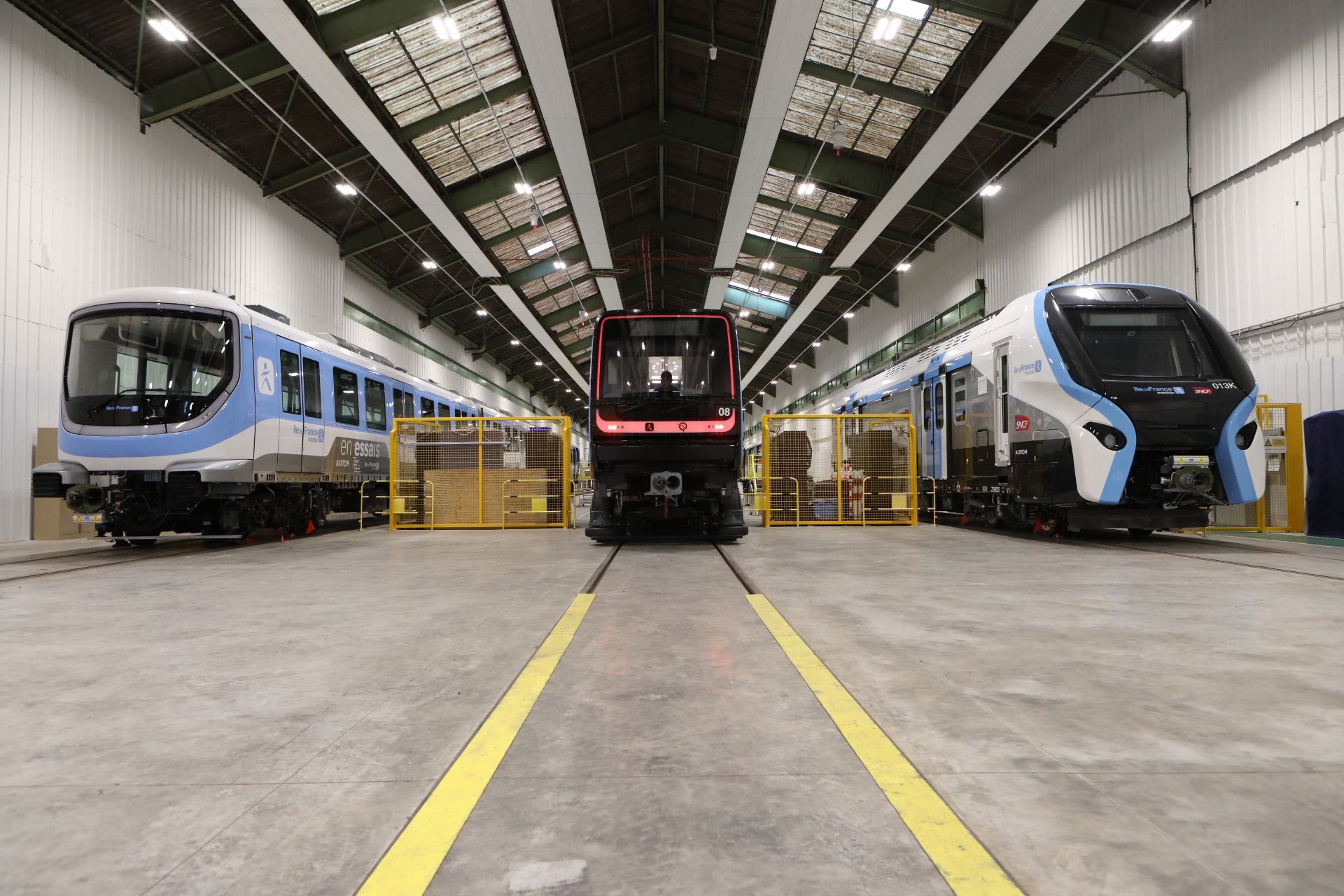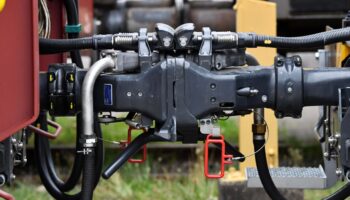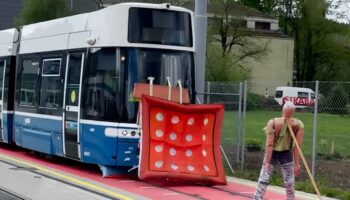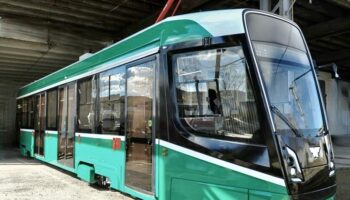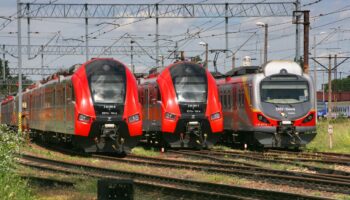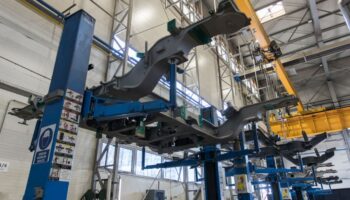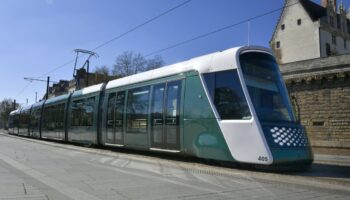France: In September 2022, the second automatic metro line with trains by Siemens Mobility was launched in Rennes. Two months later, new rolling stock for Marseille and Île-de-France was unveiled at Alstom’s plant in Petite-Forêt.
Cityval by Siemens
On 20 September 2022, eight years after signing the contract with Siemens, a 13.4 km long automated Line B of 15 stations was put into service in Rennes. Originally, the launch was scheduled on 21 December 2020 but in the context of the COVID-19 pandemic, it was postponed several times.
Siemens designed and constructed the line and supplied the fleet of 25 two-car rubber-tyred trains, signalling systems, and platform doors. Before Rennes, the company had already implemented similar turn-key projects and built VAL automatic light metro systems in Lille, Paris, and Toulouse. Siemens also constructed the first automated Line A in Rennes and manufactured trains for it.
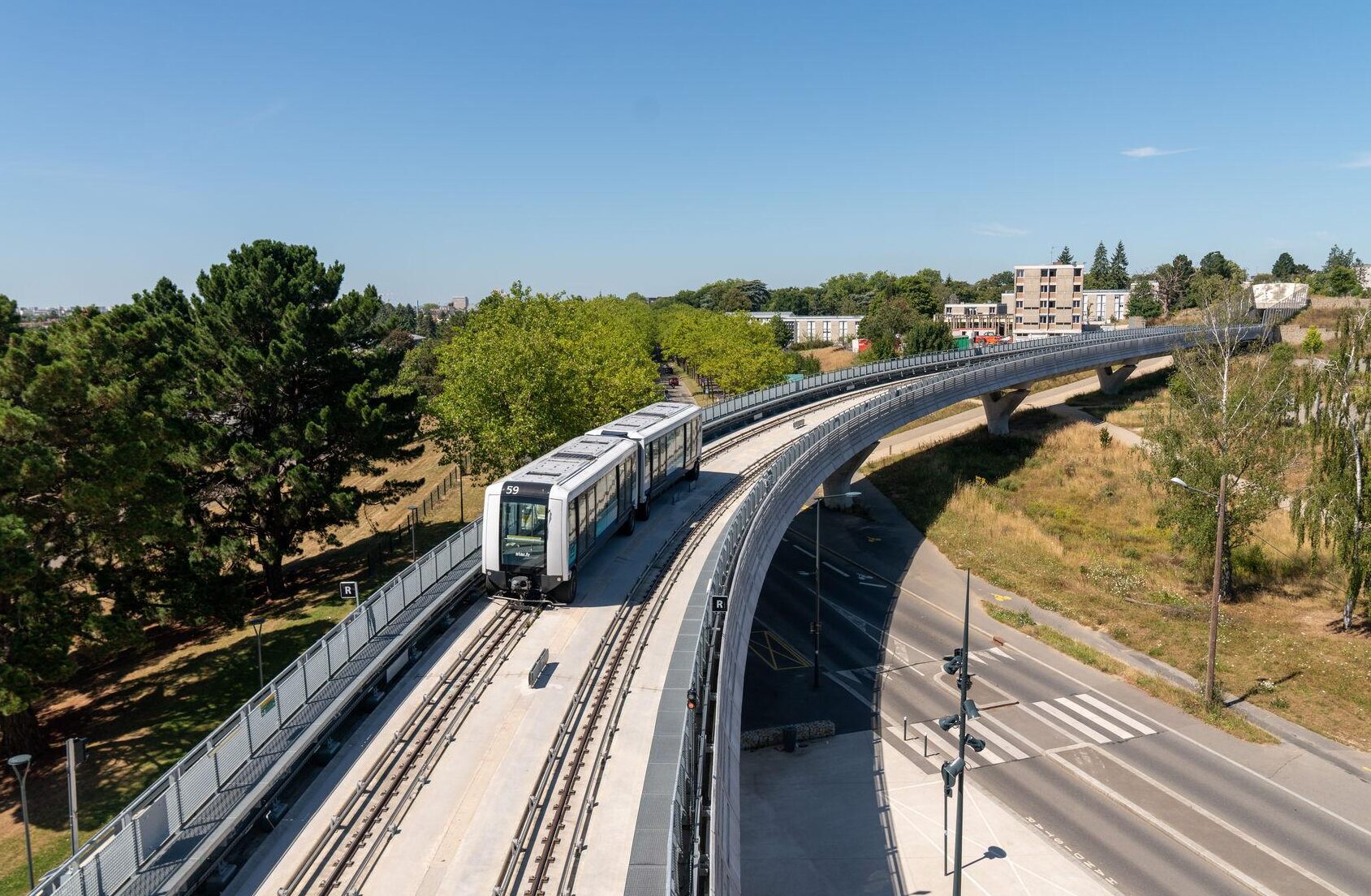 Unmanned Cityval by Siemens in Rennes. Source: the metro of Rennes
Unmanned Cityval by Siemens in Rennes. Source: the metro of Rennes
Line B is the first Neoval metro line, a new generation of the automated metro. It features a single central guiding rail on a concrete slab encased by rollers. In a classical VAL, rollers move over concrete guideways. The new system is like Translohr, a single-rail tram that Lohr Industrie produced before 2012 when it was acquired by Alstom. Until that year, Lohr was developing this technology in cooperation with Siemens. The interior and exterior of the trains for Rennes are developed by Yellow Window, a French product and design agency, that also was engaged in a project of designing new Alstom’s single-rail trams for Padua, Italy.
Siemens developed two Neoval models: Cityval for cities (like that in Rennes) and Airval for airports. They mainly differ in dimensions and the interior. For example, the body of Airval trains is wider, the windows are larger, and they have fewer seats and more space for luggage.
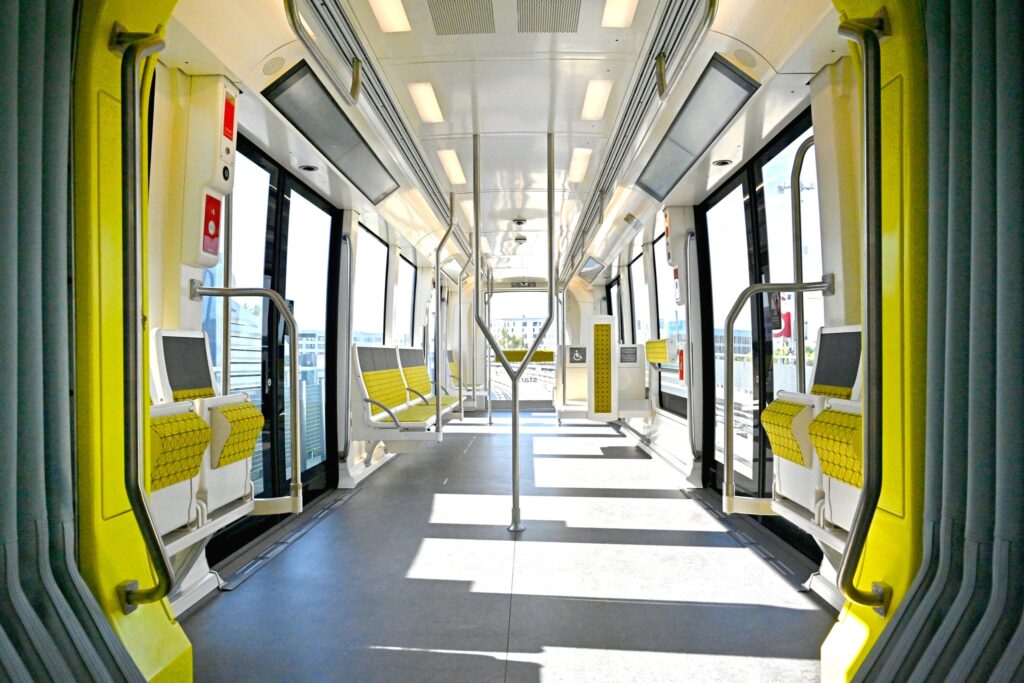
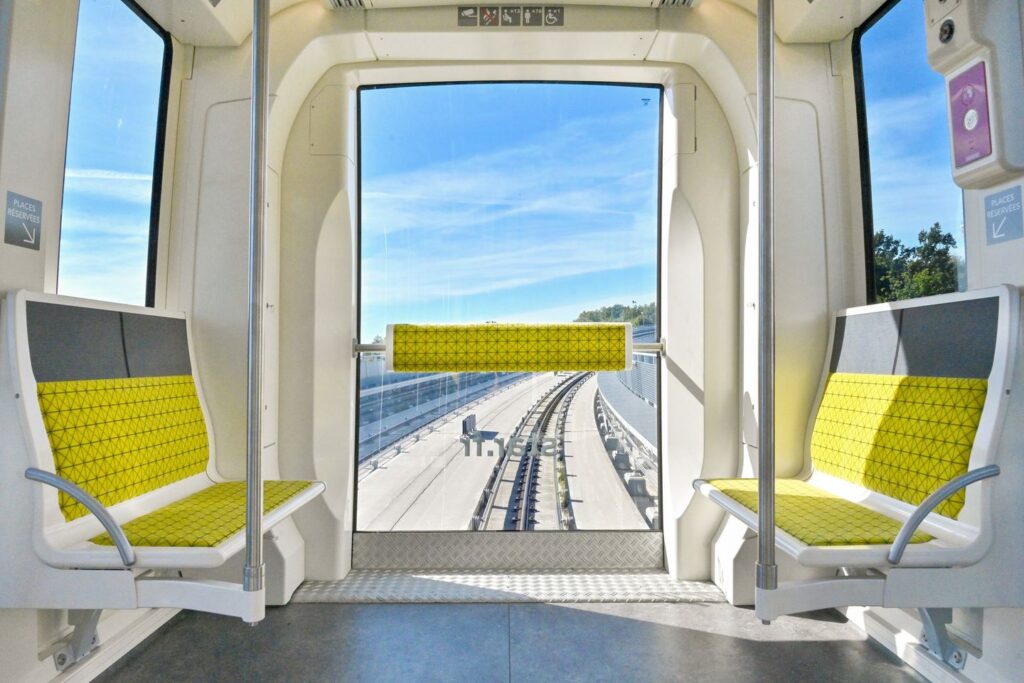 Interior of unmanned Citivals by Siemens. Source: railway-news
Interior of unmanned Citivals by Siemens. Source: railway-news
A typical two-car Cityval for Rennes is 22.4 m long, 2.6 m wide and can accommodate 179 passengers, 26 of them seating. During rush hour, the third car can be added, so the line will carry about 15,000 passengers – instead of 9,000 – in one direction in a single hour. The operating speed is 35 km/h.
Metropolis, Cityduplex and MP14 by Alstom
In early November 2022, Alstom presented the first automated Metropolis (NEOMMA) train at its plant in Petite-Forêt. This is a part of the contract the company was awarded in the autumn of 2019. For €430 mln Alstom will supply 38 rubber-tyred trains for the metro in Marseille and upgrade two lines for unmanned operation. The first three trains are expected to be delivered in 2023, and the entire fleet will enter service in 2024. According to Alstom, trains will operate in semi-automated mode: drivers will control passengers taking and leaving the train and its getaway. Several years later two lines are scheduled to be fully automated: M2 in the middle of 2025 and M1 in 2026. The unmanned service is planned to have two-minute intervals.
Four cars of Metropolis can carry up to 500 passengers. The train which is 65 m long and 2.6 m wide is expected to consume only 75% of the energy required for the current fleet of the Marseille metro. Regenerative braking and LED lighting are believed to ensure such savings. According to Alstom, 96% of the components used in the train are recyclable.
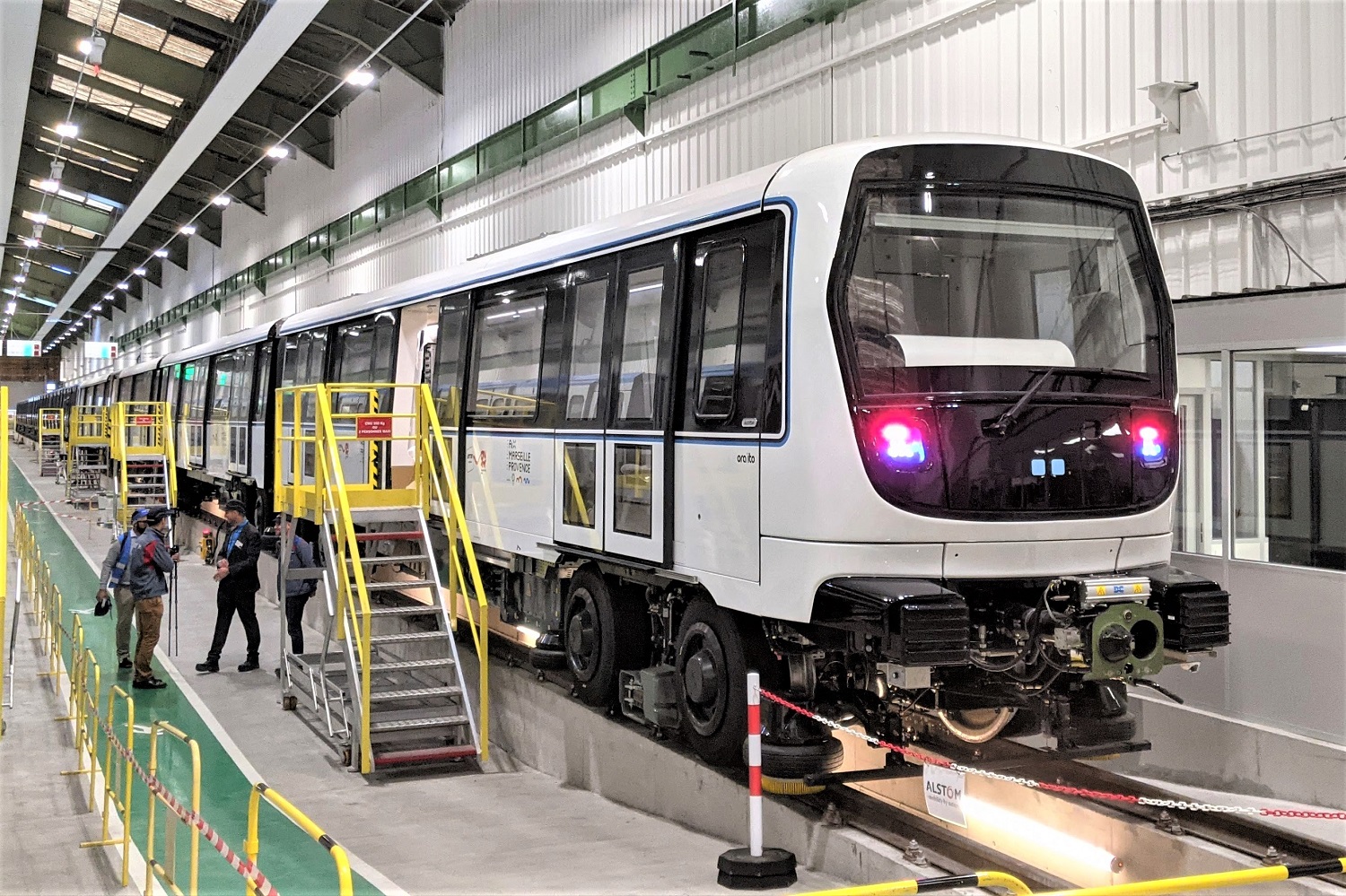 Unmanned Metropolis (NEOMMA) for Marseille at Alstom’s plant in Petite-Forêt. Source: madeinmarseille
Unmanned Metropolis (NEOMMA) for Marseille at Alstom’s plant in Petite-Forêt. Source: madeinmarseille
Several weeks after unveiling NEOMMA, Petite-Forêt saw another presentation, this time for officials from the Île-de-France region. A partially double-deck EMU, X’Trapolis Cityduplex, made a particular impression on the attendees. In January 2017 the French national railways operator SNCF awarded a €3.7 bln framework contract for the supply of 255 trains. The firm part is for 56 six-car trains for Line E and 15 seven-car trains for Line D of the Paris RER network. The operator gave these trains a new designation, RER NG, RER Nouvelle Generation.
By November 2022, SNCF received five six-car trains after successful testing at the Noisy-le-Sec test centre. According to Olivier Pease, Alstom’s KAM for the Île-de-France region, the trains are certified, and the company is waiting only for the approval of the French National Railway Safety Authority (EPSF). Without such approval a train cannot be used for passenger service. The first trains are planned to appear on Line E in the summer of 2023.
Testing of X’Trapolis Cityduplex (RER NG) in Gagny in May this year. Source: Le Ferrovipathe Francilien/youtube
Each X’Trapolis Cityduplex features two types of cars. Head cars are double-deck and intermediate cars — a typical train has four or five of them – are single-deck. RER NG can operate on 25 kV AC lines and 1.5 KV DC lines at a maximum speed of 140 km/h. 1,500 passengers can travel in a 115.5 m long six-car train, and 1,800 in a 130.3 m long seven-car one. With more than half seats that fold, X’Trapolis Cityduplex can accommodate more passengers during peak hours.
Attendees of the presentation could see several MP14 five-car rubber-tyred trains with driver’s cabs built for the Paris Metro. These had been tested since April 2022 at a depot near Rhone-Bois-Perrier station in the suburbs of the French capital and will serve Line 11 in 2023.
75.4 m long MP14 trains accommodate 562 passengers. The noise level in cars is 40% lower compared to the current fleet, and the trains are claimed to be 95% recyclable.
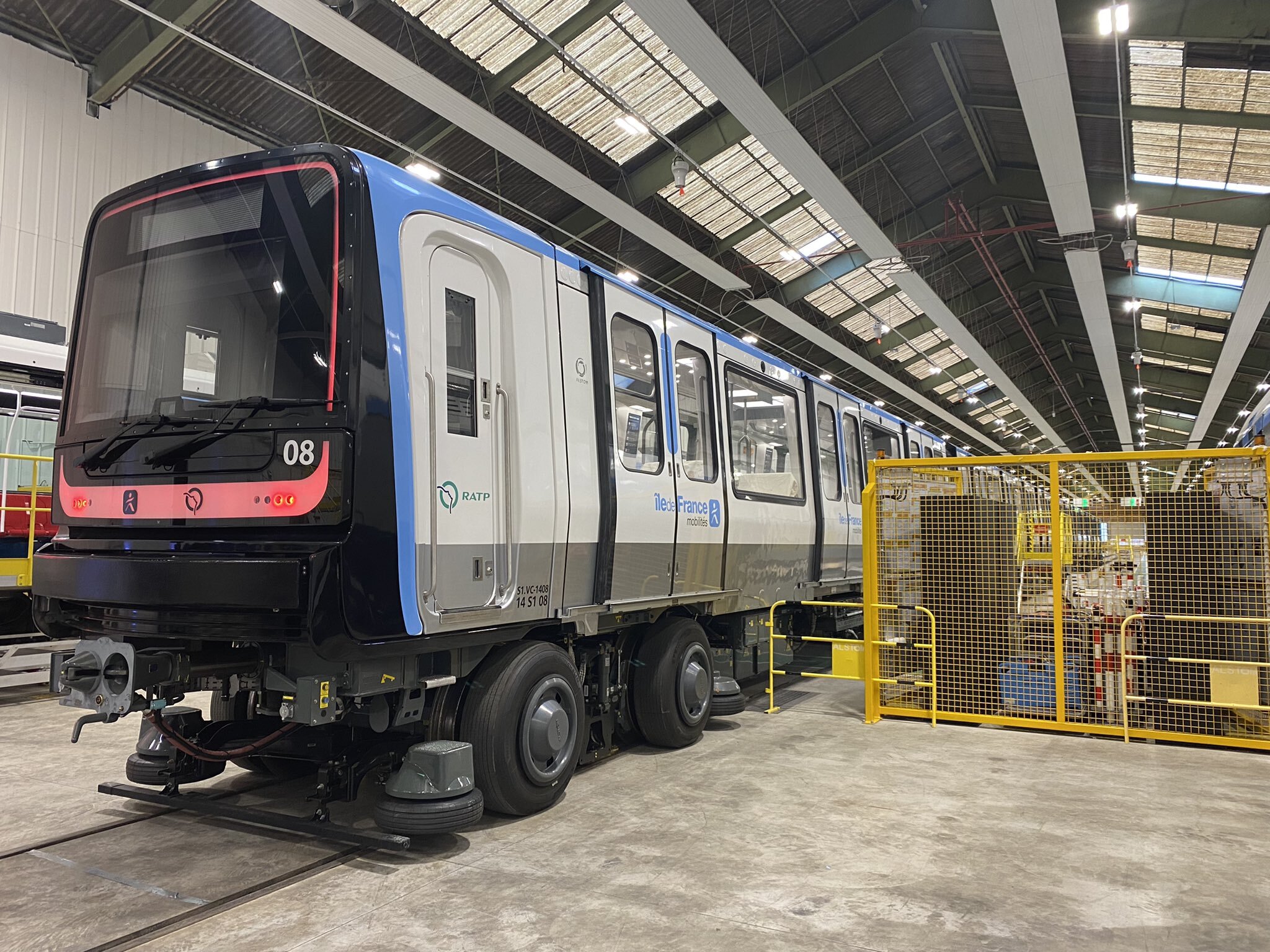 MP14 metro train for Paris at the plant in Petite-Forêt. Source: Pauline Landais-Barrau/twitter
MP14 metro train for Paris at the plant in Petite-Forêt. Source: Pauline Landais-Barrau/twitter
A framework contract for the supply of up to 217 trains of various configurations for several lines of the Paris Metro was entered with the Autonomous Parisian Transportation Administration (RATP) in March 2015. The first order was for the delivery of 35 eight-car unmanned trains for Line 14. In January 2017, an additional order for 20 six-car unmanned trains for Line 4 was received. Under the second and third options, 39 five-car MP14s with driver’s cabs will be supplied for Line 11. The first eight-car vehicles began regular service in October 2020.
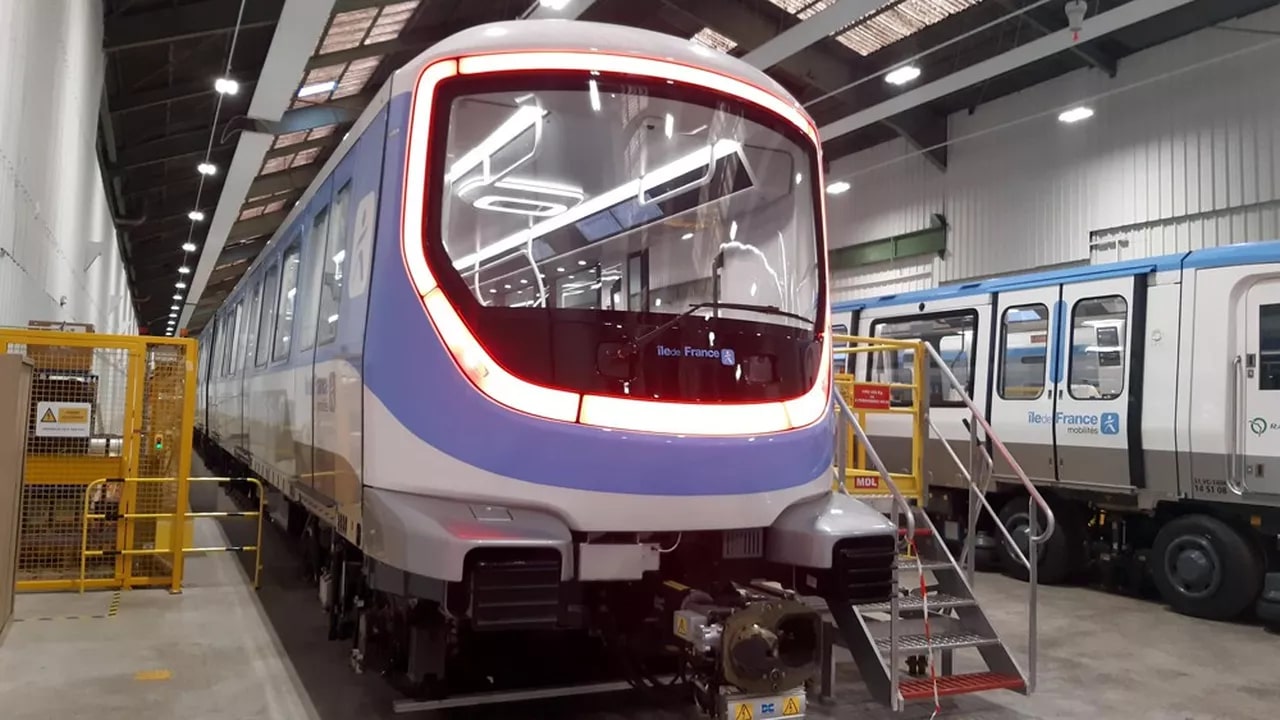 Metropolis metro train for Paris at the plant in Petite-Forêt. Source: Denis Fainsilber/Les Echos
Metropolis metro train for Paris at the plant in Petite-Forêt. Source: Denis Fainsilber/Les Echos
Together with MP14 and X’Trapolis Cityduplex trains, Alstom showed Metropolis metro train sets prepared for operation from 2024 or 2025 on the new automated metro lines in Paris. Under the contract of 2018, Alstom will supply 25 six-car trains and 23 three-car trains with an operating speed of 55–65 km/h and a maximum speed reaching 110 km/h. Six-car trains will be 108 m long accommodating up to 1,000 passengers, and three-car trains will be 54 m long and have space for 500 passengers.



